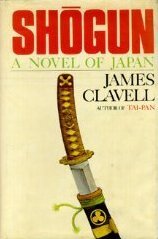Big Sister, Little Sister, Red Sister by Jung Chang (Knopf)
Daughters of a wealthy Shanghai merchant who were raised as Christians and educated in America at a time when an overseas education was akin to flying to the moon, the Soong sisters became three of the most famous women in the world during their lifetimes who still continue to spark controversy today.
The eldest daughter, Ei-ling, was given a Portuguese passport in 1904 to circumvent the U.S. Chinese Exclusion Act of 1882 and boarded a ship that would carry her from Shanghai to San Francisco. She was only fourteen, the first Chinese woman to be educated in the States, at a college in Georgia that was one of the first to grant diplomas to women at that time. She would remain at Wesleyan College for five years, in a small town where the inhabitants regarded her as an unwelcome anomaly.
Four years after Ei-ling’s arrival at Wesleyan, she was joined by her younger sisters, fourteen-year-old Ching-ling, the beauty of the family, and the baby sister May-ling, who was nine when she arrived in Georgia and wouldn’t return to Shanghai until she was nineteen.
All three sisters’ lives were shaped by their American years. Ei-ling, who spent most of her time there as the only Chinese woman for thousands of miles, was scarred by a remark she overheard during her ocean voyage: “I’m so tired of those dirty Chinamen... We won’t see anymore for a long time, I hope.” This, she said, “seared her heart forever,” making her withdrawn, self-sufficient, and fiercely devoted to her studies. Ching-ling was chic, quiet, and a rebel whose model was Joan of Arc, with a passionate devotion for the newly-founded Republic of China. May-ling, who spent most of her childhood and adolescence in America, was happy there and became the most highly educated of the sisters, graduating with a degree from Wellesley before returning home to Shanghai. “At times,” she wrote to a friend in the states, “I cannot express myself in Chinese.”
In spite of their wealth and extraordinary educations, each sister took the traditional way out and chose husbands whose ambitions would buttress their own. Ei-ling found her match in H.H. Kung, whose money, Christianity, and degrees from Oberlin and Yale made him her ideal counterpart. Ching-ling expanded her passion for the Republic of China to include the man who was its founder. Sun Yat-sen was her father’s friend and contemporary; she married him against the wishes of her parents, beginning the rift that would separate her from her family for the rest of her life. May-ling, gay and frivolous, became an inveterate flirt, worrying her oldest sister to the point that Ei-lng found her a husband, Chiang Kai-shek, the Generalissimo, leader of the Nationalist Army.
With these marriages, the sisters’ fates were set. Ei-ling’s money and brains made her a power behind the rise of Chiang Kai-shek as he became the bulwark against the forces of Communism led by Mao Tse-tung. Ching-ling, after the death of her husband, threw in her lot with the Communists as Madame Sun Yat-sen and became a prominent figurehead in the People’s Republic of China. May-ling became the uncrowned empress of the Nationalist Chinese and an essential ambassador for her husband by lobbying for him in the United States.
Their colorful stories are poised against the backdrop of the political drama and turmoil that pervaded their lives and that they maneuvered through so well. Jung Chang has written a comprehensive and opinionated history, not only of the Soong sisters but also of twentieth-century China. Chang’s personal biases are clear and at times threaten to sink her book but her passionate point of view and dogged scholarship make this biography/history compelling and insightful, proving that the three sisters still capture the limelight long after their deaths. ~Janet Brown




